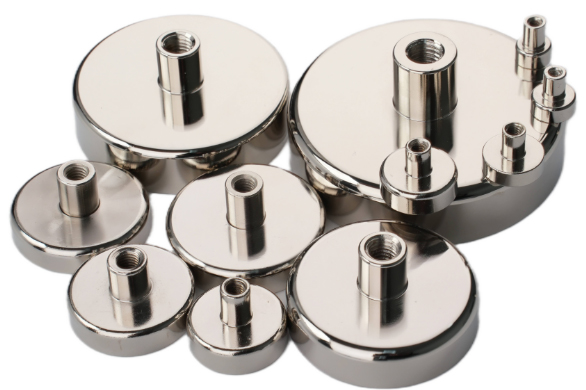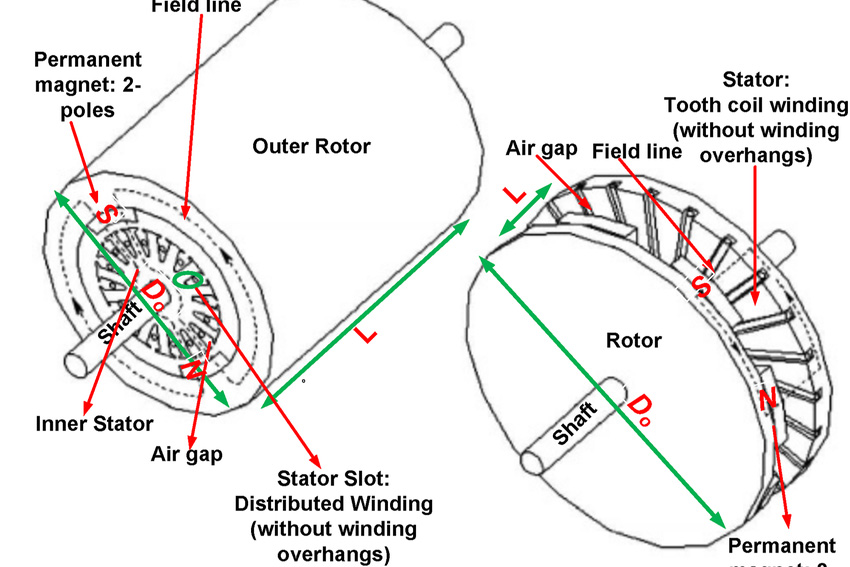Common Applications of Ferrite Magnets
Ferrite magnets are permanent magnets mainly made of SrO or BaO and Fe2O3. Compared with other permanent magnets, ferrite magnets are hard and brittle and have lower magnetic energy. However, ferrite magnets are not easily demagnetized, not easily corroded, and have simple production processes and low prices. Therefore, ferrite magnets have the highest output in the entire magnet industry and are widely used in industrial production. So in this article, let's take a look at the common applications of ferrite magnets.
 Common Applications of Ferrite Magnets
Common Applications of Ferrite Magnets
Before diving into our article, let's make a comparison between Neodymium Magnets and Ferrite Magnets to see what's the difference between them.
Neodymium Magnets vs Ferrite Magnets
Ferrite magnet is a kind of metal oxide with ferromagnetism. In terms of electrical characteristics, ferrite has a much larger resistivity than metal and alloy magnetic materials, and it has higher dielectric properties. The magnetic properties of ferrite also show high permeability at high frequencies. Therefore, ferrite has become a non-metallic magnetic material widely used in the field of high frequency and weak current. It is a non-metallic magnetic material, which is a composite oxide of magnetic ferric oxide and one or more other metal oxides. Its magnetic force is usually 800-1000 Gauss, and it is often used in sound boxes, speakers, and other equipment.
The advantages of neodymium magnets are high cost-performance and good mechanical properties. Its shortcomings are its low Curie temperature, poor temperature characteristics, and easy corrosion, which must be improved by adjusting its chemical composition and adopting surface treatment methods to meet the requirements of practical applications. Neodymium magnets belong to the third generation of rare earth permanent magnet materials. They have the characteristics of small size, lightweight, and strong magnetism. They are currently the magnets with the best performance-to-price ratio and are known as the magnet king. The advantages of high energy density make NdFeB permanent magnets widely used in modern industry and electronic technology.
Without further ado, let's take a look at the common applications of ferrite magnets.
Common Applications of Ferrite Magnets
Ferrite magnets are the lowest cost of hard magnets available today. They have excellent oxidation resistance and usually do not require additional protective coatings or surface treatments. They are the first choice for all types of consumer, commercial, and industrial applications.
Common applications of ferrite magnets include:
1. School Projects 2. Loud Speakers 3. Guitar Pick-Ups 4. Eddy Current Devices 5. Breaks & Clamps 6. Motors & Generators 7. Switches 8. Relays 9. Security Systems 10. Sweeper Magnets 11. Crafting Projects 12. Model Making 13. DIY Home Projects 14. Science Experiments 15. Classroom Displays 16. Store Signage 17. Office Organization 18. Home Decor 19. Retail Displays 20. Lifting Machinery 21. Fridge Magnets 22. Apparel 23. Whiteboards 24. Promotional Gifts
Conclusion
Thank you for reading our article and we hope it can help you to have a better understanding of the common applications of ferrite magnets. if you want to know more about ferrite magnets and other types of permanent magnets, we would like to advise you to visit Stanford Magnets for more information.
As a leading magnet supplier across the world, Stanford Magnets has been involved in R&D, manufacturing, and sales of magnets since the 1990s. It provides customers with high-quality permanent magnets like neodymium magnets, SmCo magnets, AlNiCo magnets, and ferrite magnets (ceramic magnets) at a very competitive price.















